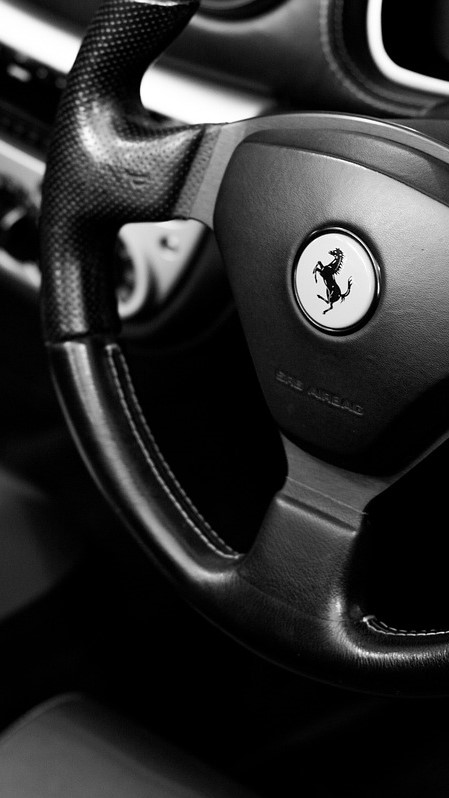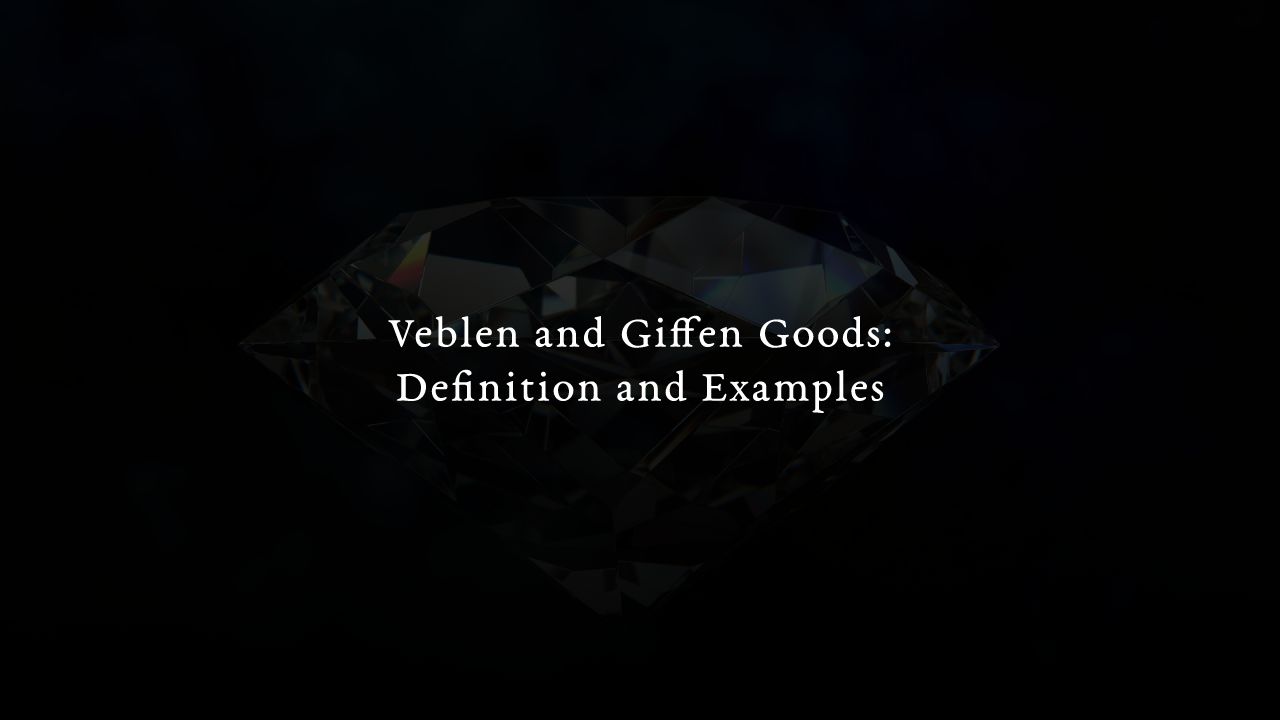Introduction
In economics, Veblen and Giffen goods are two important concepts that affect consumer behavior and market demand. Veblen goods are luxury goods whose desire to buy increases as their prices rise, whereas Giffen goods are inferior goods whose demand increases as their prices rise. There are a number of reasons why a product/service demand can increase as the price rise, and the role of the price as a signal is often a matter of psychology rather than microeconomics. This work will provide an in-depth analysis of these concepts, including their definitions, examples, and how they relate to the law of demand.
Table of Contents
- Introduction
- How can we properly define Veblen goods?
- Understanding the Economics of Luxury
- Why do Veblen goods contradict the law of demand?
- An Upward-Sloping Demand Curve
- What are Giffen goods?
- Difference between Giffen goods and Inferior goods
- Conclusions
- Bibliography
How can we properly define Veblen goods?
Veblen goods are named after Thorstein Veblen, an American economist who first introduced the concept in his 1899 book: “The Theory of the Leisure Class.” In this book, Veblen argued that people often purchase luxury goods not because they actually need or even want them, but rather to signal their social status or wealth to others. In other words, people buy Veblen goods to impress others, not because they actually derive more utility from the product.
This means that the demand for Veblen goods is not solely driven by the product’s inherent qualities, but also by its perceived status and exclusivity. As a result, as the price of a Veblen good increases, the demand for it may also increase, as people perceive it to be even more exclusive and desirable. Clearly, an high price can be also read as a result of high production costs and so high quality. However, we know that is not always true.
Examples of Veblen goods
Veblen goods can come in many forms, but they are typically luxury-related items that are highly visible and associated with status or exclusivity. Some examples of Veblen goods include:
- Luxury cars: High-end luxury cars, such as Lamborghinis and Ferraris, are often seen as Veblen goods because they are expensive, highly visible, and associated with wealth and status;
- Designer clothing: the same for designer clothing brands, such as Gucci and Louis Vuitton;
- Fine art: Fine art, particularly works by famous artists such as Pablo Picasso and Vincent van Gogh, are often Veblen goods because they are associated with cultural sophistication and exclusivity;
- Fine jewelry: particularly items such as diamond necklaces and special watches, are often Veblen goods because of the idea that the owner is able to reflect to people.
Understanding the Economics of Luxury
With the conspicuous consumption, the utility function of a consumer has been enriched with everything is experience, indirect benefits and ostentation. In this sense, certain products behave differently than what we would typically expect based on the law of demand. This phenomenon can seem counterintuitive, but it has important implications for businesses and marketers who need to understand how to position their products/services in the market, or even how to position themselves.
Difference between
Veblen goods and Luxury goods
Veblen goods and luxury goods are both types of goods that are associated with high prices and exclusivity, but there are several key differences between the two.
Role of status: One of the main differences between Veblen goods and luxury goods is the role of status in driving demand. Veblen goods are goods for which the demand increases as the price increases because consumers associate higher prices with higher status or prestige. In contrast, while luxury goods may also be associated with status and exclusivity, their demand is typically driven by factors such as quality, craftsmanship, and brand reputation rather than just price.






Elasticity of demand drivers: Both consumers are basically insensitive to price increases. However, the drivers behind the willingness to pay the premium price are different: a Veblen good is inelastic since it’s price is able to give the consumer the status needed or desired due to biases (e.g. bandwagon effect), while a Luxury good is inherently inelastic since the perceived value may not be solely based on its price.
Consistency: Veblen goods are often marketed towards the opportunity-seeker, who have the means to purchase goods at high prices solely for their status or prestige. In contrast, luxury goods are often marketed towards a specific demographic, including those who value quality and craftsmanship, as well as those who can afford to pay a premium for exclusivity and brand reputation.
Why do Veblen goods contradict the law of demand?
Veblen goods contradict the law of demand because they are not subject to the typical inverse relationship between price and quantity that we would expect for most goods. In other words, Veblen goods are not just commodities that people buy for their practical use or enjoyment, but are instead status symbols that people buy to signal their wealth and social status. The more exclusive and expensive the Veblen good is, the more valuable it becomes as a signal of status, and therefore the more desirable it becomes to consumers.
Going beyond the microeconomics implications means exploring new dimensions of the consumer behavior.
Biases, experiences, asymmetries and signals are just some of the variables that should to be included in the price-quantity graph.
This means that marketers of Veblen goods must carefully craft their branding and messaging to appeal to the desires and motivations of their target audience.
Do You remember the last Ferrari’s advertisement on TV?
Ads are seen by Ferrari as mass marketing that invalidate exclusivity: almost their entire budget is into the F1 racing team.
So, are Veblen goods inelastic or elastic?
Veblen goods are generally considered to be quite inelastic in terms of their demand. This means that, the demand for a Veblen good may be relatively insensitive to price changes, as consumers may be willing to pay a premium for the good in order to maintain their social status or reputation. Overall, the elasticity of demand for Veblen goods can vary depending on a range of factors, including the specific product in question, the preferences of consumers, and the prevailing economic conditions.
An Upward-Sloping Demand Curve
As we’ve just seen, there are certain products that don’t observe the law of demand.
Another interesting case is represented by Giffen goods, which are inferior goods that contradict the law of demand: their curve is positively sloped.
Moreover, Giffen goods shows a negative elasticity of demands (<1): they are generally considered to be highly inelastic in terms of their demand.
Let’s see why.
What are Giffen goods?
Giffen goods are named after Sir Robert Giffen, a Scottish economist who first introduced the concept in the late 19th century. In his research, Giffen observed that in certain situations, the demand for a good could actually increase as its price increased, contrary to the law of demand. Giffen goods are typically considered inferior goods, which are goods that consumers purchase less of as their income increases. However, the demand for Giffen goods is influenced not only by income but also by the price of the good itself.
This means that the demand for Giffen goods is not driven by the product’s inherent qualities or status, but rather by its perceived necessity and lack of substitutes. As a result, as the price of a Giffen good increases, the demand for it may also increase, as people are forced to buy more of it despite the higher price.
Examples of Giffen goods
Giffen goods are often associated with staple goods that low-income consumers need to purchase to survive. Some examples of Giffen goods include:
- Rice: In some developing countries, rice is a staple food that accounts for a significant portion of low-income households’ food budget. If the price of rice were to increase, consumers may not be able to afford more expensive alternatives and may be forced to buy even more rice to sustain themselves, leading to an increase in demand for rice.
- Bread: Similarly, bread is another staple food that is often associated with low-income households.
- Potatoes: Potatoes are another staple food that can be relatively inexpensive but also highly nutritious. The Irish potato famine in the 19th century is a well-known case of Giffen good.
Difference between Giffen goods and Inferior goods
A Giffen good is always an Inferior good.
However, for Giffen goods, the income effect is significantly higher than the substitution effect.
In the case of inferior goods, as the income increases, the demand for that good decreases. For Giffen goods, this effect is amplified by the lack of substitutes, so people consume more as the price rises, even though the real income has decreased.
Conclusions
Veblen and Giffen goods are important concepts in economics that can have a significant impact on market demand extensively intended. Understanding the differences between these two types of goods can help businesses and marketers develop effective pricing and marketing strategies, bearing in mind the psychological impacts, especially in the age of conspicuousness. By recognizing non-microeconomic factors that drives the purchase decision, companies can design better product-market combinations. Overall, the study of Veblen and Giffen goods serves as a reminder that consumer behavior is not always predictable by a chart and that businesses must be aware of the emotions that must be respected by the law of demand.
Bibliography
BOWLES, S., & GINTIS, H. (2013). A cooperative species: Human reciprocity and its evolution. Princeton University Press: New Jersey.
GIFFEN, R. (1892). Inferior Goods and the Law of Demand. The Economic Journal, Vol. 2, No. 5, pp. 20-26.
KRUGMAN, P. R., & WELLS, R. (2015). Microeconomics (4th ed.). Worth Publishers: New York.
SAMUELSON, P. A., & NORDHAUS, W. D. (2010). Economics (19th ed.). McGraw-Hill Education: New York.
VARIAN, H. R. (2014). Intermediate Microeconomics: A Modern Approach. W. W. Norton & Company: New York.
VEBLEN, T. (1899). The Theory of the Leisure Class. Macmillan Publishers: New York.

